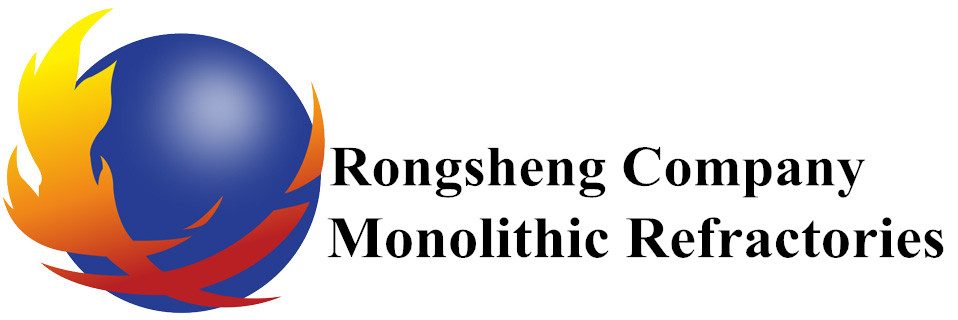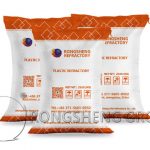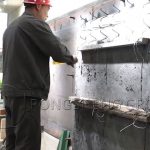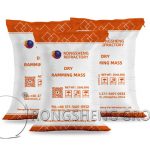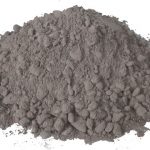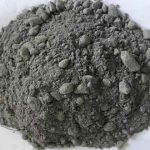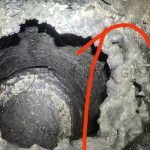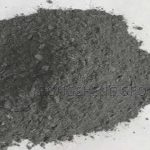Zircon has high refractoriness, a low coefficient of thermal expansion, excellent thermal shock resistance, and excellent resistance to corrosion from molten steel and alkaline slag. Therefore, zircon has long been used as a high-grade refractory material.
With the widespread application of oxy-fuel combustion technology, the increase in melting temperatures in glass furnaces, and the advancement of integrated sealing and insulation technology, the operating environment for ramming material at the bottom of the tank has become increasingly demanding. Furthermore, glass companies use recycled crushed glass as a component of their batch material. Metallic impurities in the recycled glass can accumulate on the bottom of the tank, gradually seeping into the ramming layer and creating a “downward drilling” effect, exacerbating the erosion and damage to the ramming material at the bottom of the tank.
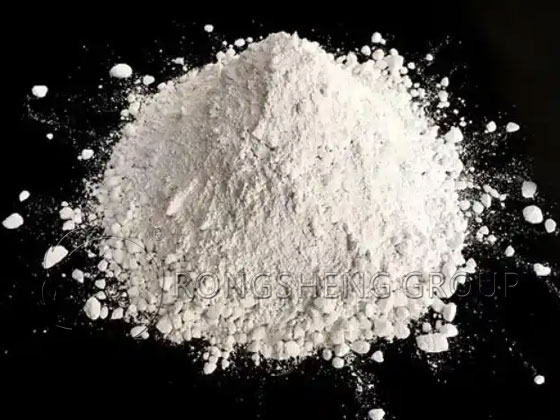
Zircon Ramming Mass for Glass Furnaces
Zircon ramming mass is a monolithic refractory material. Its performance is significantly affected by factors such as the amount of binder added during construction, the amount of water added, and curing conditions. Currently, most zircon ramming mass uses phosphoric acid or phosphates as a binder. Phosphates are highly hygroscopic, and phosphoric acid or phosphate binders react with certain components in the ramming mass, resulting in large pores. At high temperatures, harmful P₂O₅ evaporates and forms low-melting products, which also reduces the high-temperature performance of the ramming mass. To reduce the cost of zircon ramming mass, improve construction efficiency, enhance its quality, and extend its service life, this article summarizes several shortcomings of phosphoric acid-bonded zircon ramming mass.
The main raw materials for the phosphoric acid-bonded zircon ramming material include: zircon brick aggregate (0-3mm), zircon sand (80-150 mesh), zircon powder (≤0.045mm), zircon micropowder (≤0.002mm), recycled fused zirconium corundum powder (≤0.045mm), and industrial phosphoric acid (85%).
During the industrial phosphoric acid bonding test, the ingredients were placed in a mixing pot and stirred for 2 minutes. Phosphoric acid was then added and mixed for 3 minutes. The mixture was then rammed into 40mm x 40mm x 160mm specimens. The specimens were cured at room temperature and demolded after final setting. The demolding time was recorded. The specimens were then dried in a 130°C drying oven for 24 hours and heat-treated at 1200°C for 3 hours each.
The hardening time for the phosphoric acid-bonded specimens B1-B7 ranged from 32 to 34 hours. The various performance indicators of the specimens were measured 3 hours after the 1200°C heat treatment. As the proportion of recycled zirconium corundum powder increases, the compressive strength of the specimens shows no regular change, while the flexural strength shows a fluctuating trend. The linear rate of change increases with the addition of recycled zirconium corundum powder, while shrinkage increases. The bulk density decreases with the addition of recycled zirconium corundum powder, while the water absorption and apparent porosity increase.
Disadvantages of Phosphoric Acid-Bound Zircon Ramming Mix
Currently, phosphoric acid-bonded zircon ramming aggregates are most commonly used. However, phosphoric acid bonding has the following disadvantages:
① Phosphoric acid reacts with impurities in the recycled zirconium corundum powder, creating pores and reducing the zircon ramming aggregate’s corrosion resistance.
② Phosphoric acid-bonded zircon ramming aggregates cannot harden at room temperature and lack strength, requiring the addition of a setting accelerator. The addition of a setting accelerator introduces more impurities, hindering the long-term use of the zircon ramming aggregate.
③ Under prolonged high temperature conditions, phosphorus dioxide (P2O5) can migrate and volatilize, reducing the zircon ramming aggregate’s strength and shortening its service life.
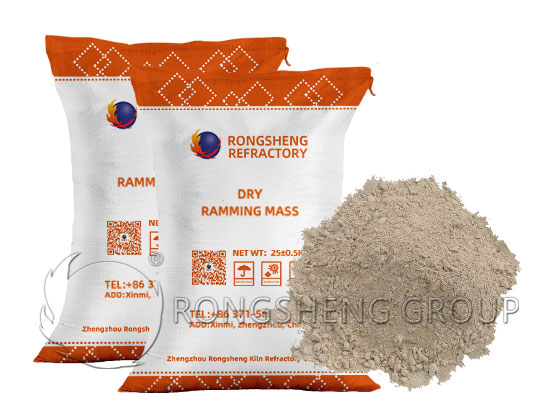
Characteristics of Refractory Ramming Mass
Refractory ramming mass is a monolithic refractory material applied by ramming. Ramming mass and refractory castables share some of the same raw materials, but their density is relatively lower, and less water is added during construction.
Refractory ramming mass is prepared by mixing granular material with a binder and other components, primarily through ramming. Ramming mass can also be made into a composite material, using silicon carbide, graphite, and electrically calcined anthracite as raw materials, using micronization technology, and adding fused cement or composite resin as a binder. Typically, it is used to fill gaps between furnace cooling equipment and masonry, or as a filler in masonry screeds.
Ramming mass has excellent chemical stability and is resistant to erosion, wear, spalling, and thermal shock. The lining produced by ramming refractory ramming mass has a low moisture content and a dense bond, surpassing the performance of refractory castables of the same material. Acidic ramming materials use binders such as sodium silicate, ethyl silicate, and silica gel. Dry ramming materials use borates, while alkaline ramming materials often use magnesium chlorides and sulfates.
After ramming and forming, refractory ramming materials harden naturally to a sufficient strength before being removed from the mold and baked. Materials containing thermoplastic carbon binders can be removed from the mold after cooling to a sufficient strength. Alternatively, they can be sintered in the mold after cooling.
The advantage of refractory ramming materials is that they can be applied on-site using ramming equipment, either using a jackhammer or mechanical ramming. For smaller quantities or in less critical areas, manual knotting can also be employed. However, the disadvantage of refractory ramming materials is that they are not as fast to apply as refractory castables and are more labor-intensive than castables.
